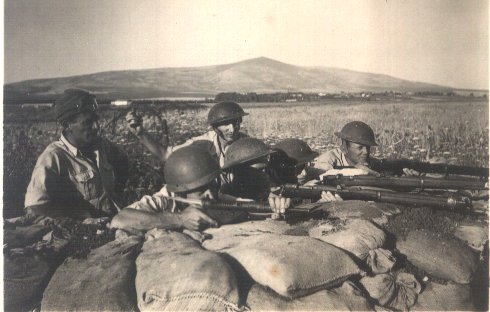Firearms XVI – XIX
Longitudinally sliding shutters turned out to be the best shutters of breech-loading rifles for a unitary cartridge. Their advantages consisted in speeding up charging and cocking the firing mechanism at the same time as opening and closing the bolt, and better extraction of cartridges. In 1870, after radical modernization and improvement, the American rifle of H. Berdan was adopted by the Russian army under the designation “Berdan-2”. After a number of improvements, it earned the reputation of one of the best in the world, on its basis, dragoon, Cossack variants, as well as a carbine were created. The French Gra rifle of the 1874 model is a very interesting “transitional” system, repeatedly modernized later (Gras-Kropachek magazine systems, etc.), and has earned high praise from the military, due to good combat characteristics, thoughtfulness of the system and excellent manufacturing quality.
Subsequently, breech-loading rifled small arms were often converted into smoothbore weapons and used as hunting weapons.
Simultaneously with the development of single-charge systems, work was carried out on the creation of magazine weapons, aimed at achieving a higher rate of fire of rifles. During the American Civil War of 1861-1865, Spencer system magazine guns with a magazine located in the stock were already used. The first Vetterli system magazine rifle with a magazine in a special tube under the barrel was adopted in Switzerland in 1869.

At first, shop guns were often converted from single-shot guns.
The German Mauser rifle of the 1871 model, converted into a magazine in 1884 with an underbarrel magazine, deserves special attention.
Since the end of the 19th century, magazine rifles have become the main individual weapons of the infantry. In 1886, France adopted a Lebel system magazine rifle and an 8-mm cartridge with smokeless powder for it. In 1907, a significantly modified model of this rifle was adopted. During the First World War, this rifle was modernized twice: first, the 1907/1915 model was adopted, then the 1907/1916 model was adopted.
In 1888, Germany, trying to keep up with France, adopted a shop rifle for smokeless powder. The rifle was the result of the work of the Rifle Test Commission, and combined the Mauser system shutter and the F. Munlicher system pack magazine. In 1898, Germany adopts a new rifle created by the Mauser company – Gewehr 98. The new Mauser rifle proved to be so successful that it served in the German army in an almost unchanged form until the end of the Second World War, and was also exported and produced under license in various versions in different countries (Austria, Poland, Czechoslovakia, Yugoslavia, etc.).
In Austria-Hungary in 1888, the rifle of the Mannlicher system was adopted, which was soon replaced by the rifle of the latest Mannlicher system of the 1895 model. The Mannlicher rifle of the 1895 model turned out to be the fastest-firing rifle of the First World War, which, moreover, had a rather soft recoil.

In 1891, the three-line rifle of the Mosin system was adopted by the Russian army.
The rifle of the Mosin system with a simple, convenient and reliable shutter design has proven itself excellently in the Russo-Japanese and First World Wars, on the fronts of the Civil War and the Second World War. “Three-line” was produced in two versions: infantry and cavalry (dragoon). In 1910 and 1930, the rifle was modernized. Due to the acute shortage of rifles of the Mosin system, which was discovered in Russia after the beginning of the First World War, 300,000 Winchester rifles of the 1895 model for the 7.62x54R cartridge of the Russian model were ordered in the USA. Winchester rifles of the 1895 model were distinguished by a slightly higher rate of fire due to the use of a Henry clip when reloading. On the other hand, they were more sensitive to contamination, and recharging using this mechanism from a lying position was quite inconvenient.
Shortly before the First World War, the “pattern 13” rifle (also known as Eddyston, Enfield-Mauser, Ross-Enfield) was tested in Great Britain for the Canadian Ross cartridge. The rifle was the product of the collective creativity of the designers of Great Britain and the United States, and there is a noticeable similarity with the German Mauser model of 1898. Due to its considerable weight and excessive length, the rifle did not gain sympathy from the soldiers.
